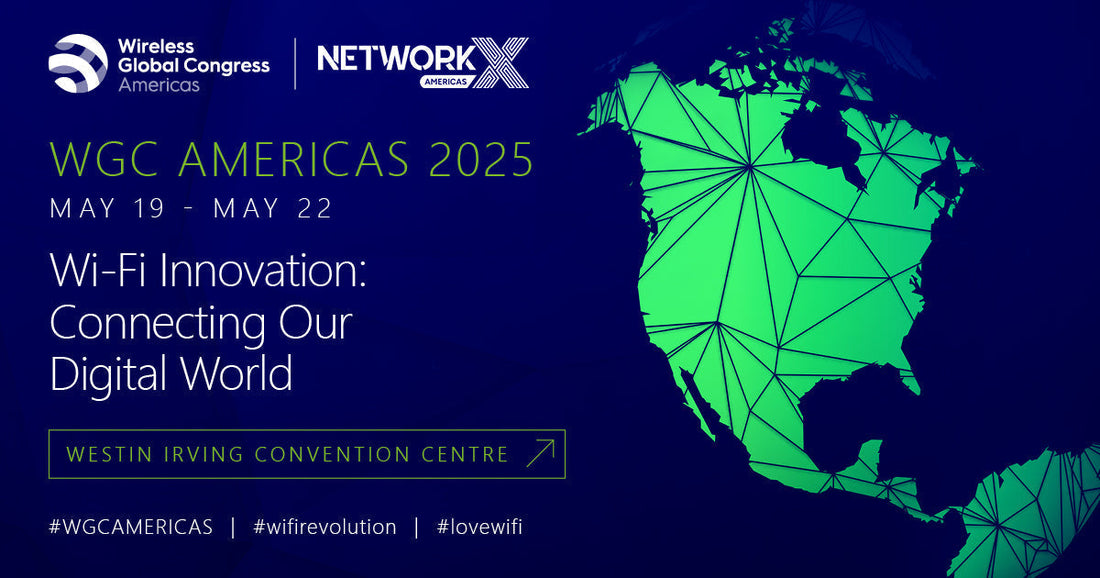The Wi-Fi industry is enjoying a period of rapid evolution, marked by significant progress in OpenRoaming, improved vendor neutrality, and new technologies like Wi-Fi 7 and the forthcoming Wi-Fi 8. As the Wireless Global Congress (WGC) approaches (May 19-22), I spoke with several industry leaders—including Tiago Rodrigues, CEO of the Wireless Broadband Alliance (WBA), and executives from WiBUZ and IronWiFi—to discuss what’s driving these advancements and what to expect at the event.
OpenRoaming: From Pilot to Global Rollout
OpenRoaming has shifted from pilot projects to full-scale deployments across multiple sectors.
“We receive inquiries for OpenRoaming every single day. People want to test it. For guest Wi-Fi, it's the way forward,” Rodrigues shared.
While hospitality has shown measured interest, the most robust adoption is happening in healthcare, municipal Wi-Fi, retail, and education. These verticals appreciate OpenRoaming’s ability to simplify connectivity and enhance security.
Authentication: Balancing Security and User Experience
As Wi-Fi roaming becomes more widespread, authentication remains a core challenge—and opportunity—for the industry.
The team at Ironwifi has been focusing heavily on striking the right balance between user experience and security.
"Roaming and authentication are really at the heart of what we're building," explained Mark Carter, Product Management at IronWiFi. "We’re focusing on reducing friction while keeping strong security policies intact, especially with new regulations like NIS2 coming into play in Europe".
IronWiFi’s approach includes a flexible authentication engine that supports various identity providers (IDPs), including Okta, Azure, and custom enterprise solutions. This allows businesses to tailor access policies without hardware or vendor lock-in restrictions.
WRIX Still Facing Persistent Challenges
The Wireless Roaming Intermediary Exchange (WRIX) continues to be a cornerstone of the Wi-Fi ecosystem. Despite its longevity, it faces ongoing challenges.
“We need more operators to embrace Wi-Fi and do more offload,” said Tiago. WRIX has successfully enabled Wi-Fi networks to interconnect and manage billing for roaming, but broader operator adoption remains inconsistent, especially outside North America.
One of the barriers is cultural as much as technical. "Wi-Fi somehow is a little bit the Far West. You never know exactly what is going to happen, and that for many mobile operators is uncomfortable," Rodrigues added.
Vendor Neutrality: The Industry’s Next Frontier
Vendor lock-in remains a persistent challenge, especially for Managed Service Providers (MSPs) and enterprises managing vast, complex networks.
“Managing networks with multiple manufacturers becomes a huge bottleneck, with different features, training requirements, and troubleshooting processes,” said Tiago. While some hardware providers have opened APIs and enabled some interoperability, there’s still no industry-wide consensus.
"We need all the top-tier manufacturers agreeing on a minimum set of features to help our customers manage those infrastructures," he stressed.
MSPs and enterprises continue to demand the flexibility to mix and match equipment without sacrificing functionality or increasing costs.
A recent survey by Maravedis Research of 65 MSPs commissioned by WiBUZ, highlights some key challenges they face:
- 65% say their current Wi-Fi platforms are too costly and complex to maintain.
- 75% rely heavily on vendor-specific management systems, which limit flexibility and scalability.
- Many MSPs dedicate between $200,000 and $500,000 annually on software customization and integration for these systems.
- Yet, 31% still struggle to achieve a unified vendor management interface.
- 32% cite a lack of skilled personnel as a significant barrier to growth.
"The status quo often leaves MSPs wrestling with high overhead, forced migrations, or closed ecosystems. While some end customers still prefer the “Apple-like,” all-in-one simplicity, many others crave the flexibility to mix and match hardware from different vendors," said Magnus Johansson, CEO at WiBUZ.
AFC, Wi-Fi 8, and QOS
One of the most anticipated developments is the Automated Frequency Coordination (AFC) service, recently approved by the FCC and soon to launch commercially. AFC will improve the use of the 6 GHz spectrum, enhancing Wi-Fi 7 and paving the way for Wi-Fi 8. As Rodrigues explained, "The standard power on Wi-Fi must become more visible and available globally. AFC is a big step for an organization like us".
Looking ahead to the Wireless Global Congress (WGC) in Dallas, AFC and spectrum policy will be major focal points, alongside deep dives into Wi-Fi 7, early explorations of Wi-Fi 8, and the growing convergence of Wi-Fi and mobile networks.
Other anticipated themes include advanced analytics, AI-driven network management, and enhancements to Quality of Service (QoS)and Quality of Experience (QoE).
"There’s a massive outcry for better analytics out there right now, particularly location analytics and APIs, which are featuring quite heavily in our future," noted Carter from IronWiFi.
MDUs, Healthcare, and Emerging Verticals
The WBA’s new MDU (Multi-Dwelling Unit) working group has seen good engagement, with over 70 companies participating. The group initially aims to create a reference architecture to help standardize deployments and improve network quality in apartment complexes and condos worldwide.
Meanwhile, healthcare Wi-Fi is gaining traction, particularly for guest access and location-based services, though enterprise-grade management remains a longer-term goal.
Tiago said that "harmonizing architectures and improving interoperability will accelerate adoption and improve user experience across MDUs and healthcare".
What’s Next for Wi-Fi
With innovations like open roaming, AFC, Wi-Fi 8, and greater vendor neutrality on the horizon, the industry promises more seamless, secure, and intelligent wireless connectivity.
As Tiago summarized, "Everyone will soon expect to connect to secure Wi-Fi automatically using different identities. That’s the direction we're heading".
If you want to meet me at WGC, book a time now to learn more about your work.
Watch the Full Interview with Tiago Rodrigues, CEO at the WBA
